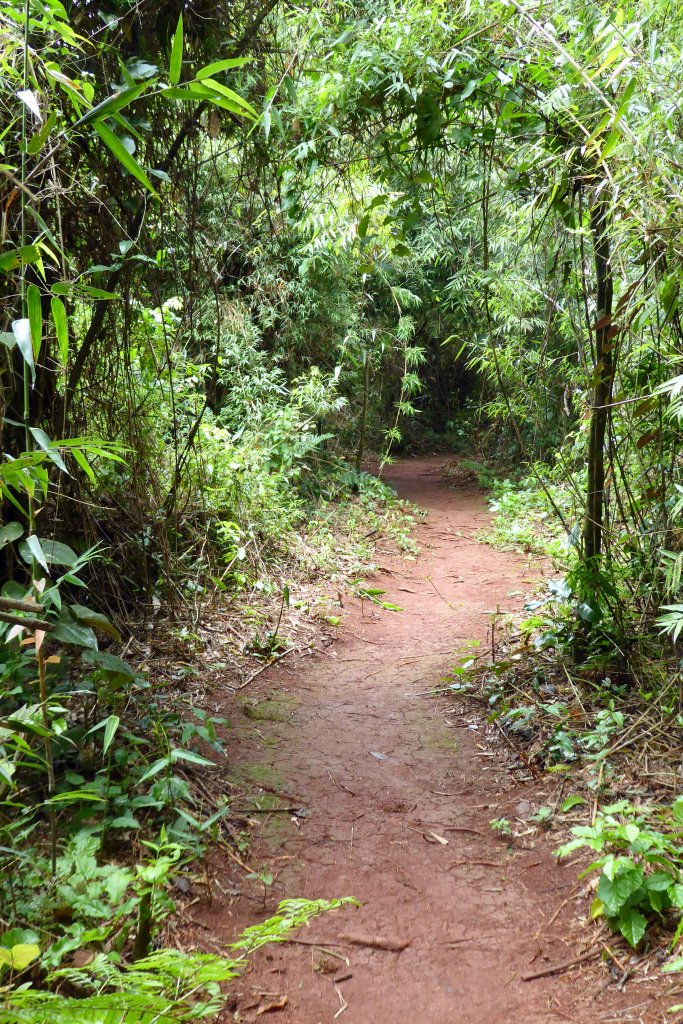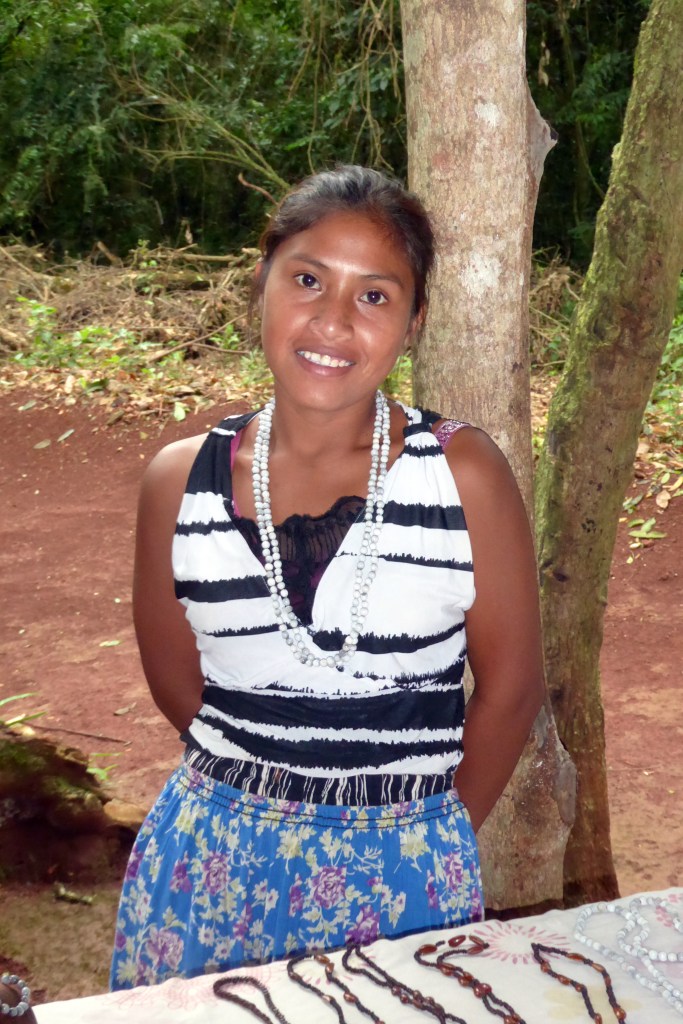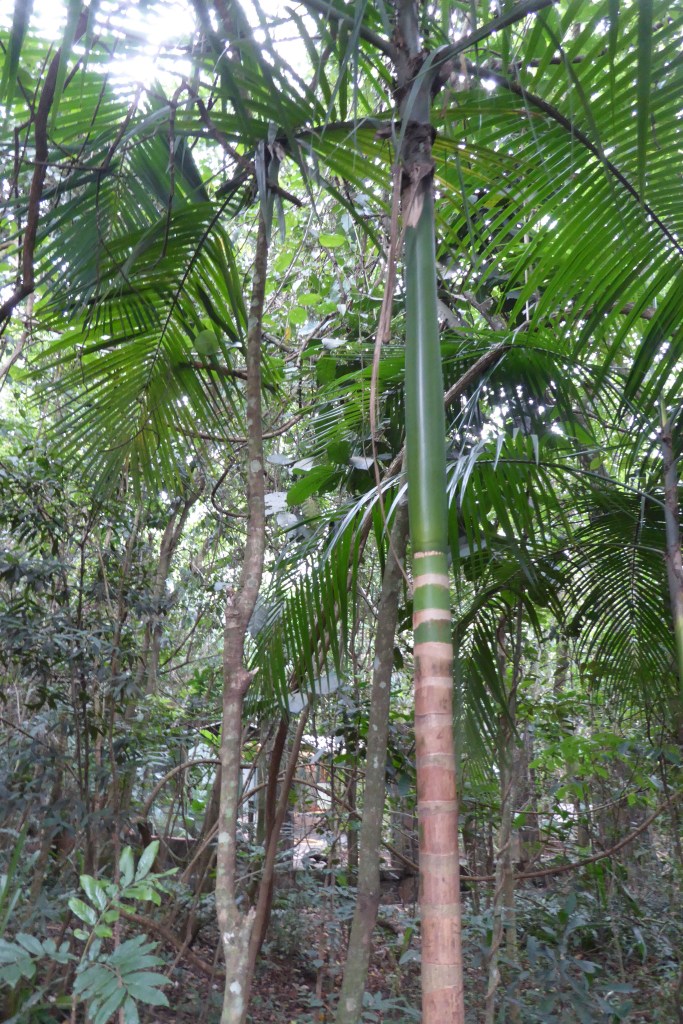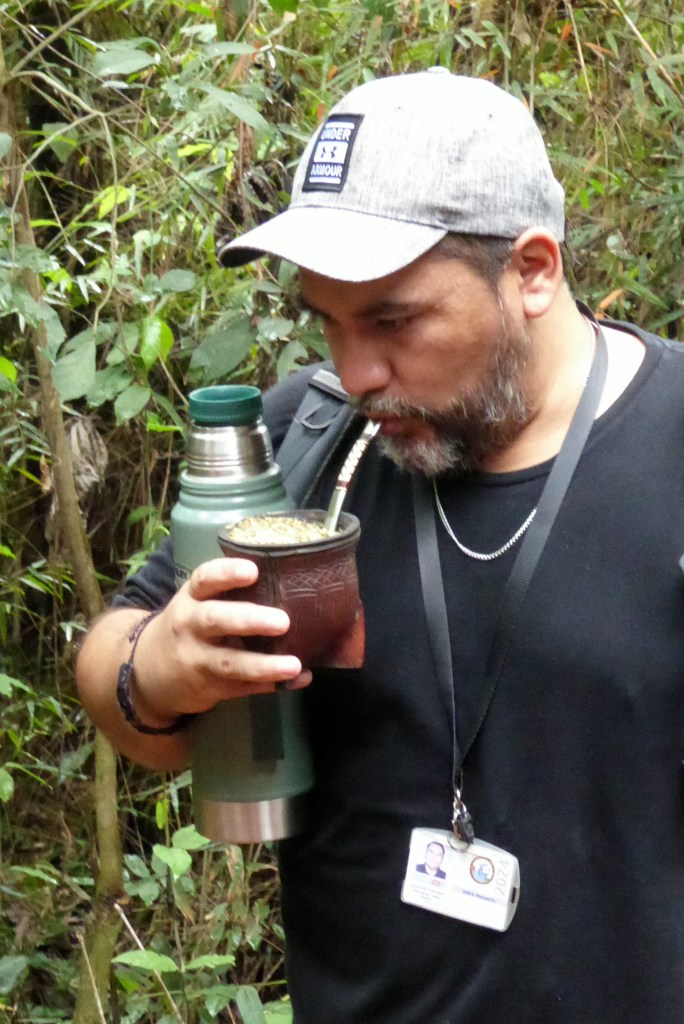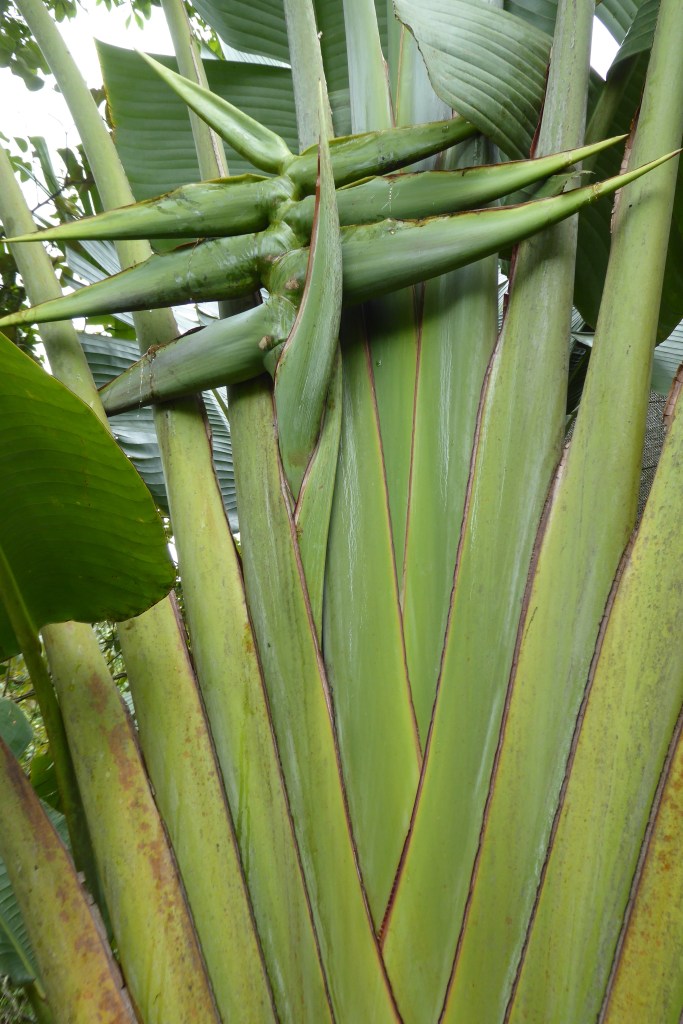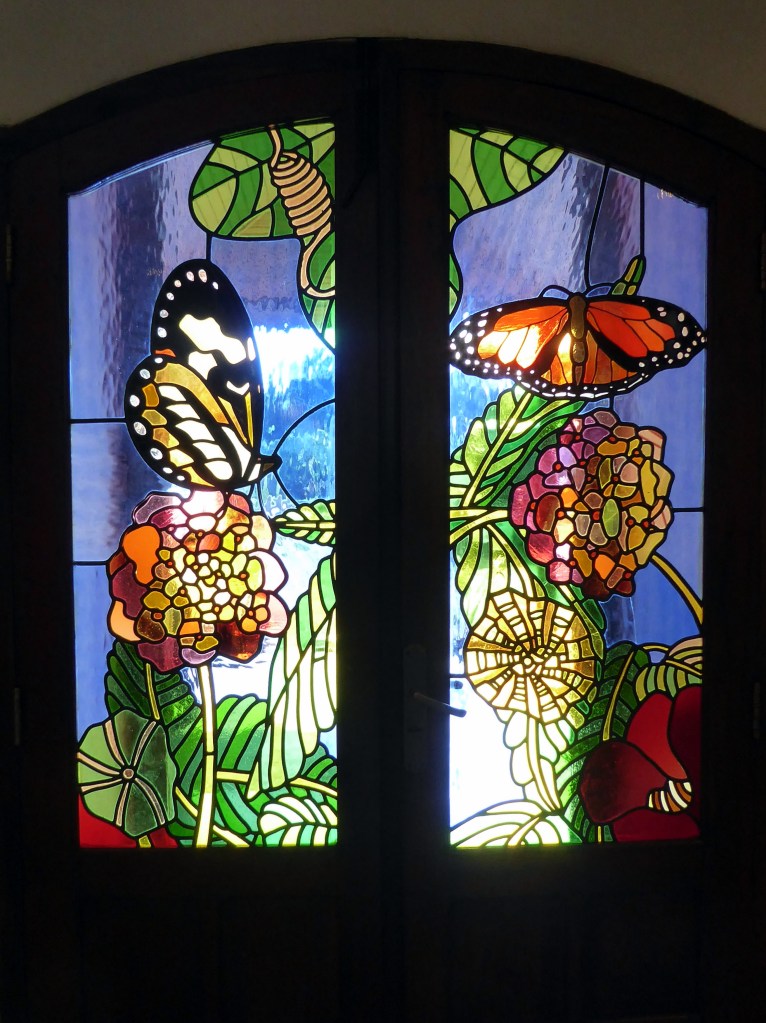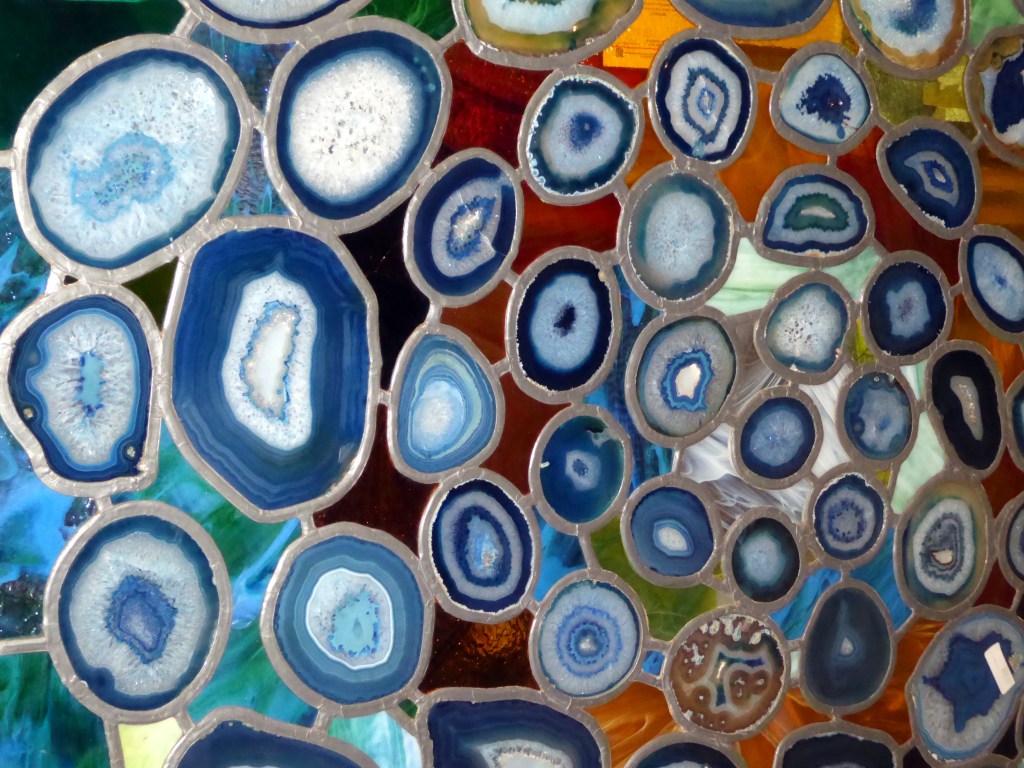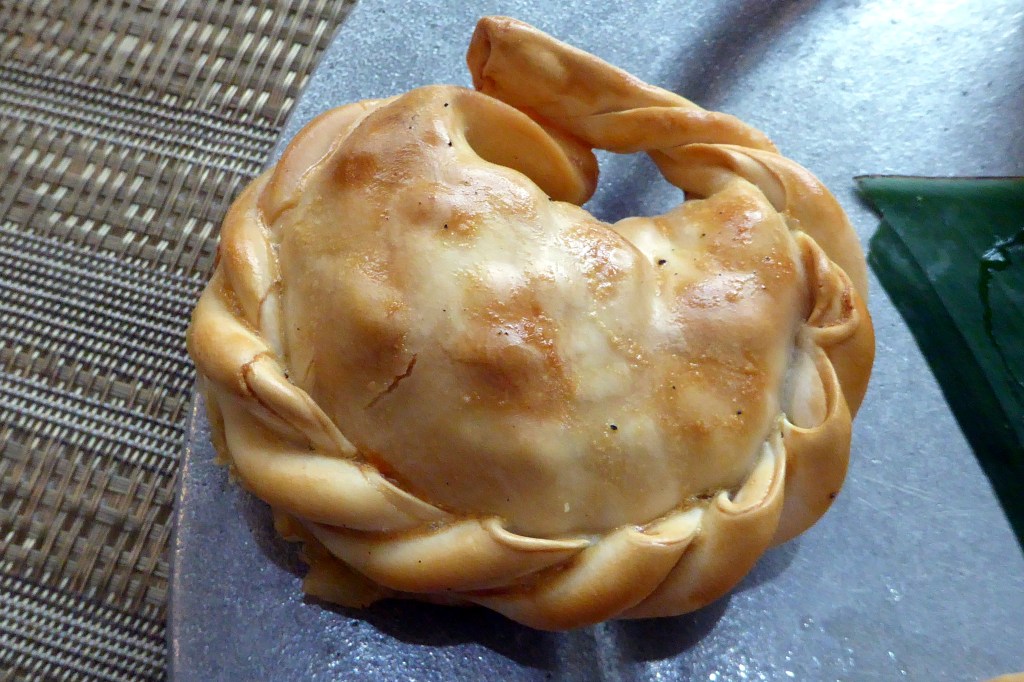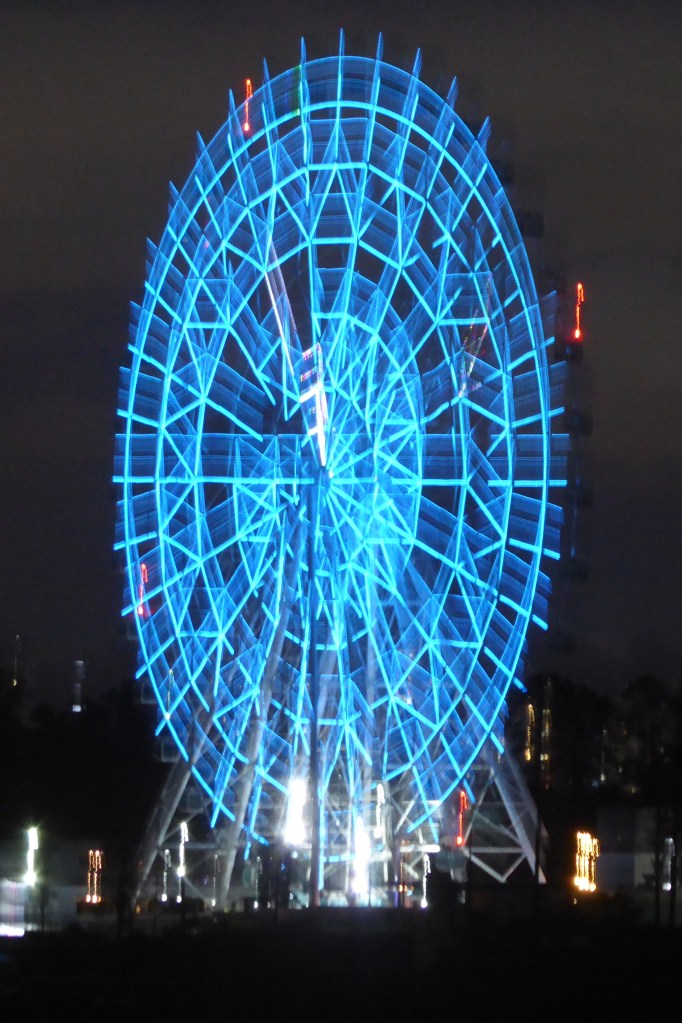Welcome to the jungle! I was excited to have the opportunity to visit the indigenous Guarani community of 1,500 residents in the jungle of Puerto Iguazu. The Guarani people have always been nomads, so that “1,500” is really +/- depending on the day. As a native nation, they can move freely between Argentina, Brazil, and Paraguay without having to go through border check. There are five Guarani communities in the region, and they walk between them, rather than use horses or other modes of transportation. They will only use a bus to travel to communities outside of the region.
(For all photos, especially panoramas, click on the image for a full screen view.)
We first boarded an open-air covered truck to drive to the community, and then walked the rich clay-soil path through the jungle to meet with Delphin, the village spiritual leader. He taught us their version of greeting one another: “Ou-ja-ve-tay,” said face-to-face with your hands up, palms facing the other person, and looking them directly in the eye. It is the way to say hello, show respect for the other person, and respect for the earth.

Although the Guarani people can afford shoes, they choose to be barefoot, so they can always be in touch with the earth. They also choose to live modestly with only the necessities.
Since Spanish is the national language of Argentina, they are given a Spanish “official” name at birth. But in their community, the spiritual leader will give a native name that has a special meaning.
Delphin demonstrated how they used to catch their food with a small model of a handmade wood trap. The rope of the trap was made from the bark of philodendron plants. They are no longer permitted to hunt, so they must purchase their meat at a store.
To earn money, the villagers make and sell their handicrafts, including beautiful baskets and wood carvings of native animals. They grow their own food, so this money is used for clothes and other necessities.
Notice the necklaces Delphin is wearing? These are handmade and worn as identification, blessed by the spiritual leader. Each person wears them differently and the quantity they wear differs. Before he died two years ago, Delphin’s grandfather was the previous spiritual leader of his community and had blessed the necklaces Delphin was wearing in his memory.
Delphin’s mother prepared some snacks for us, including Mbeju, a starch cake served with honey. We were also treated to a performance by some children of the village.
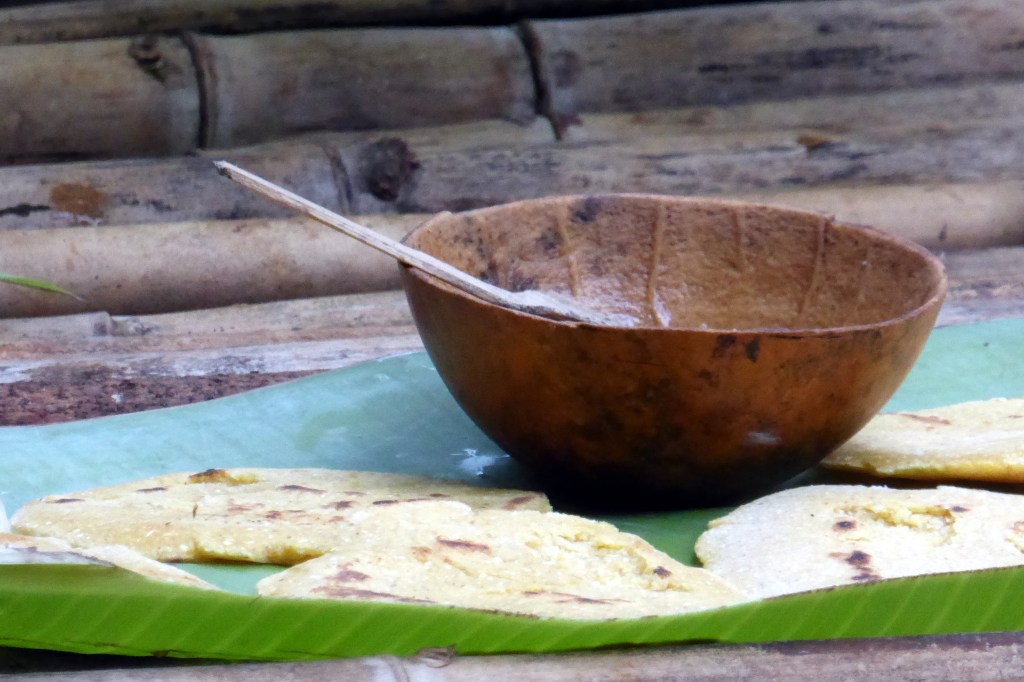


Learning about the culture of the Guarani community was fascinating and memorable—a highlight of our time in Argentina. To remember the day, I bought a small basket and a few of the small carved animals.
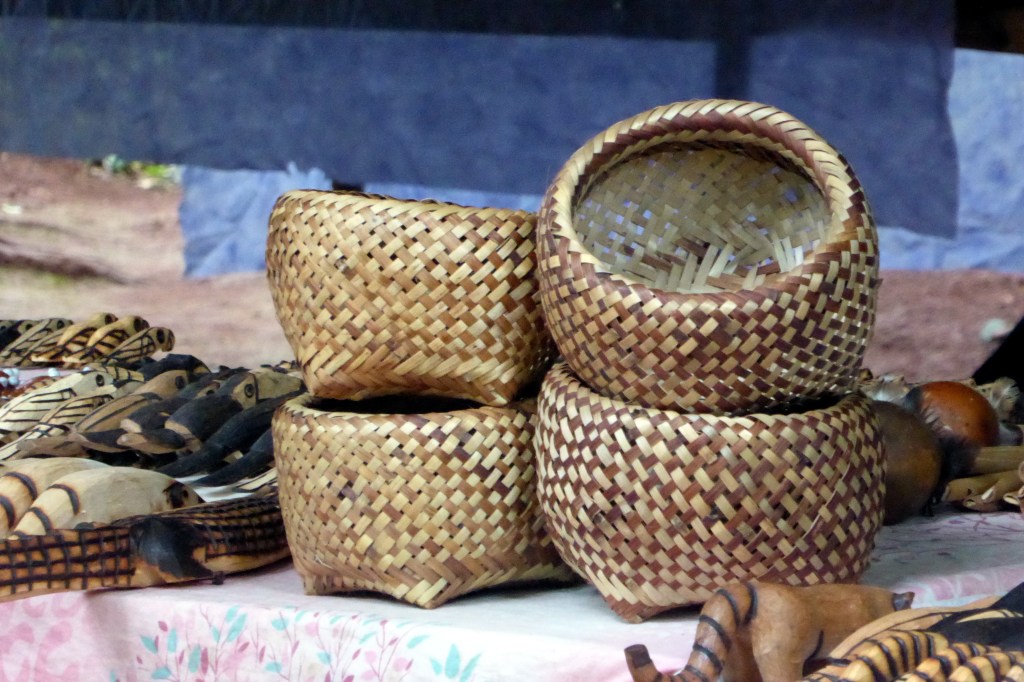

Following our visit, we had lunch at a beautiful restaurant and gardens just outside of the Guarani community. We first toured the gardens, which included yerba mate trees, source of the traditional Argentinian drink, mate, which I wrote about previously. I smiled when I saw the trees, because our local guide, Manu, ALWAYS had his mate in arm and mate vessel in hand!
The orchid and butterfly house was beautiful:

For lunch, we enjoyed a sampling of traditional regional food, which was delicious:

The remainder of the afternoon was free, so we enjoyed spending it in Puerto Iguazu and enjoying the views from our hotel:











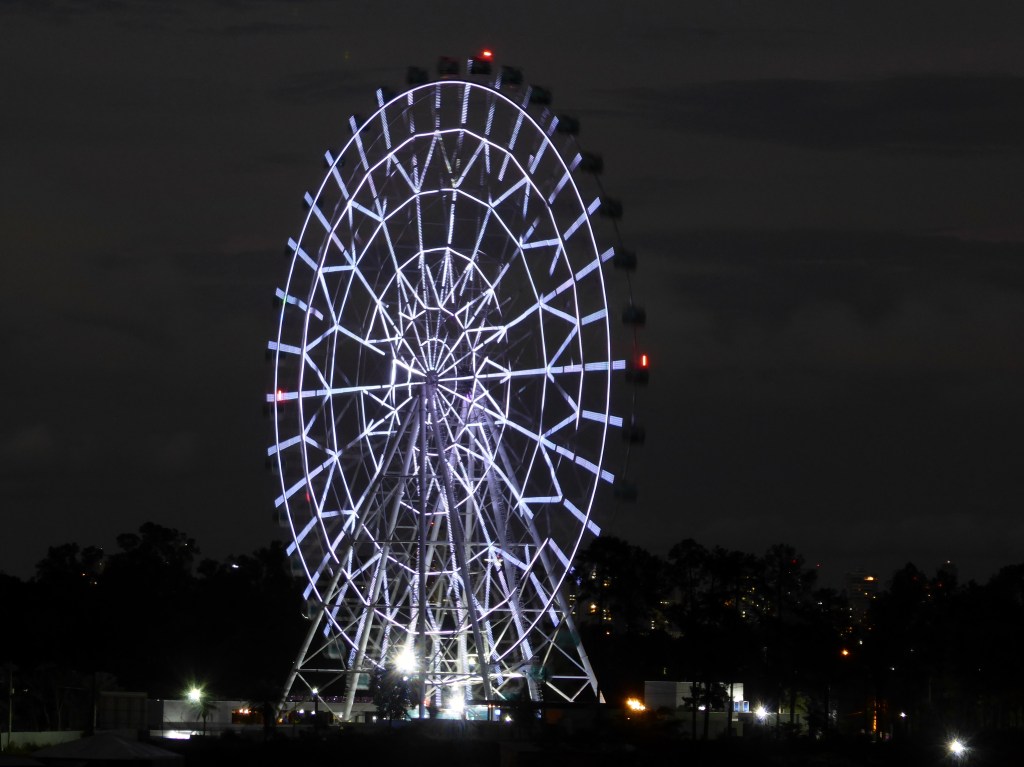
Next up: ARGENTINA & CHILE #20: ABOVE AND BELOW(!) THE ARGENTINIAN SIDE OF IGUAZU FALLS


